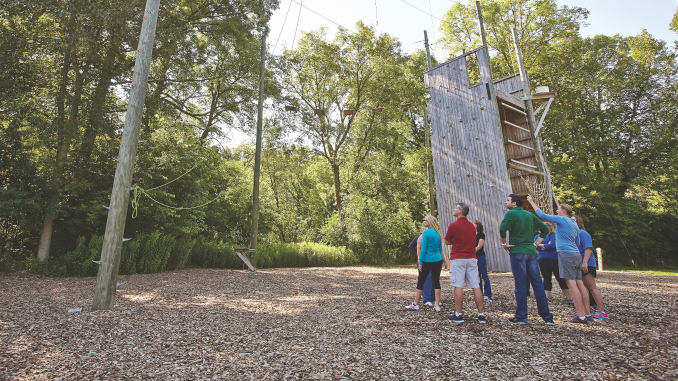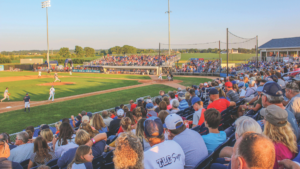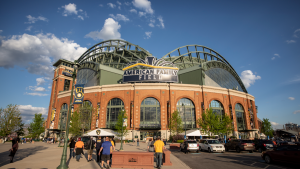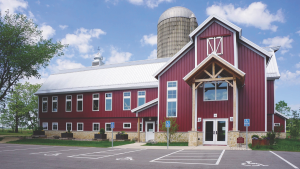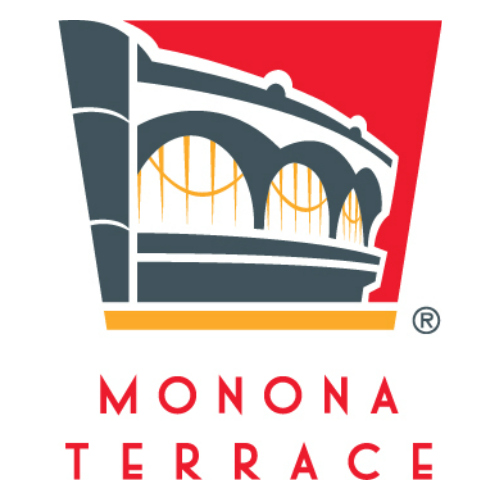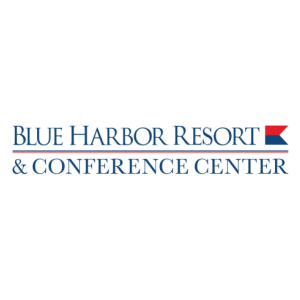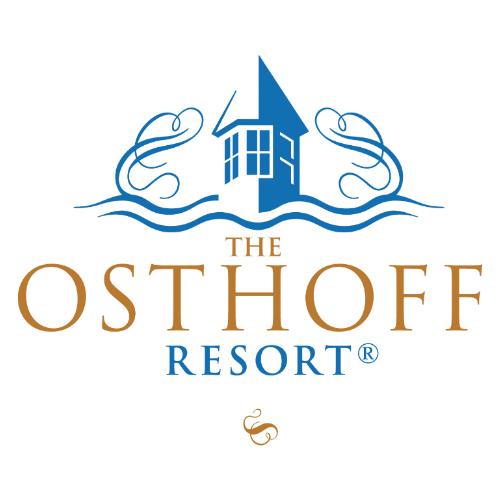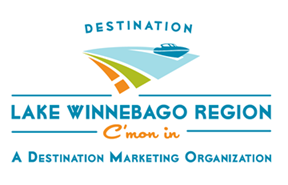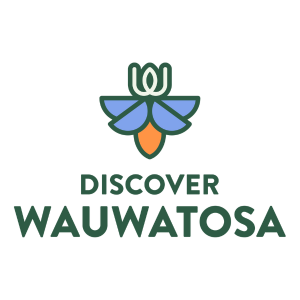Execute an Experience
01/26/2020
By Greg Gerber | Photo: Kohler Experiential Learning Center
Meetings have evolved over the past 20 years beyond formal functions where people travel great distances to sit in an uncomfortable seat in a cold room to listen to lectures read from a PowerPoint presentation.
Today’s meetings are far more experiential and, as a result, attendees often retain more information while forming lasting memories of the event.
Organizations still need to facilitate gathering and training people, but even the way attendees learn is changing. Classrooms and videos are out, while live, hands-on training is gaining traction. When that’s not practical, meeting planners are adding other experiences to the mix.
“It’s no longer as simple as gathering 10 people into a room, setting up a projector and calling it a day,” says Brad Lyles, director of sales and marketing at Grand Geneva Resort & Spa in Lake Geneva.
A new style of conference may include some classroom or large-group events, but also physical activities, unique food experiences and engaging entertainment options. Venues are taking note of the trend toward experiences.
The 1,300-acre Grand Geneva features two award-winning golf courses and other activities like rock climbing. The resort has hosted helicopters for rides, welcomed food trucks for specialty meals and set up rounds of night golf for events.
Even smaller meetings are taking advantage of activities like kickball, basketball and tennis, not to mention the full water park on campus.
The Kohler Experiential Learning Center in Kohler offers traditional meeting rooms, but also an outdoor challenge course and even zip lines for guests to enjoy. The staff orchestrates scavenger hunts and other quick activities to get people working together during corporate events, says Luke Nurnberger, manager and lead facilitator.
“Meetings are moving far beyond standard keynote presentations,” agrees Tom Graybill, vice president of sales for Tri-Marq Communications, an event and video production company. “I’ve seen everything from marching bands maneuvering through the audience to people juggling chainsaws on a stage to internal fireworks and even science experiments,” he explains.
A Challenging Dynamic
Developing an experiential event requires creativity and the ability to manage all the dynamics that come into play, says Nurnberger. Personal preferences, comfort levels, energy, physical ability and participant buy-in are all critical considerations.
“It’s like having a superpower with the ability to do a lot of good and to inflict a lot of damage if not handled properly,” he explains. “Because of the dynamics involved, if an event isn’t handled well, it can produce negative results, bad experiences and poor memories for participants.”
Utilizing experts to create (and guide people through) positive and impactful experiential events is tremendously helpful to ensure people participate and feel respected, he adds.
“The key is to have a plan — and alter that plan on the fly — to handle a myriad of what-ifs that may arise based on the personalities of participants,” Nurnberger suggests.
For example, doing athletic competitions may meet with challenges if participants aren’t athletic and see it as a waste of time. Social engagement with a group of introverted people doesn’t encourage meaningful interaction and may lead to them tuning out, he says.
What’s the Objective?
According to Lyles, determining a meeting’s objective is the essential first step to creating a genuine experiential event. There can be several reasons for bringing a group of people together and each one is significantly different. Meetings can focus on:
- Product launches to teach people about a new item.
- Creating synergy by bringing different divisions together.
- Strategic planning.
- Celebrating a new year, a successful period or individual success.
- Meeting a new organizational leader.
“The vibe of a gathering changes how we plan the meeting,” says Lyles. “In celebrating a successful year, a sales manager might want a rock star event with a band and fireworks that night. To break up sessions, perhaps he’ll bring in virtual-reality gaming equipment.
“However, if the tone of the meeting is strategic planning with a manager and 10 direct reports, perhaps they need a quiet area off the beaten path for undisturbed discussion,” he adds. “But those business sessions can still be offset with a unique lunch experience.”
Discussing the objective with venue staff allows planners to tap into their creativity and experience to plan a memorable event.
“If planners can describe the objective, we can give them 10 examples of what other firms have done. We can show them what has worked and what hasn’t,” says Lyles.
Engage the Audience
There are little ways planners can enhance a meeting. Graybill recalls a gathering that used a Catchbox — a foam cube with microphones in it — to enhance audience participation in a question-and-answer session. Instead of passing a microphone, people were literally tossing the cube across the room.
“It was much more engaging and much less intimidating because people were holding a box, not a microphone,” says Graybill.
Another fun way to involve the audience is to conduct a live poll or contest in which people use their smartphones to answer a question, with the results displayed in real time on the screens.
“This allows the audience to participate in providing material being presented,” says Graybill.
Food Is a Factor
Food has always been an important part of meetings, but now it goes beyond providing a plated meal.
“We’ve seen a shift away from people only focusing on watching their diets to wanting to know where the food came from and how it was cooked,” Lyles explains. “We’ve seen meeting attendees seeking healthier selections and embracing farm-to-table options. They also like to eat outside when possible.”
For intimate gatherings of a few dozen people, meeting planners can make meals part of the experience. For example, Grand Geneva can set up a meal so a chef from one of its four restaurants shows how the food is prepared.
Kohler Learning Center’s Team Cuisine challenge uses food competitions to encourage people to work as teams. The chef serves as a coach and participants create dishes that everyone gets to taste.
“We set up an environment where people are encouraged to interact naturally,” says Nurnberger. “That’s when their true personalities come out.”
Include the Community
Experiences don’t have to be confined to the ballroom, says Graybill. He has worked with a group that took the entire audience off site to clean up a school damaged by Hurricane Harvey.
“Experiences are most memorable when attendees are directly involved and not just viewing what others are doing,” says Graybill. “Give them a chance to do good and feel good about doing it, and the event will truly stand out.”
In making their events more experiential, meeting planners are involving local communities, not just the venues, in planning meals and activities, according to Lyles.
Groups are piggybacking on boating, fishing and nature excursions, as well as golf and spa outings. Ask hotels to help arrange transportation to take attendees to a paintball venue or even a theater to enjoy a play.
“I may not plan the entire event for you, but I can give you a list of things to consider on your own and show whom to contact to get that ball rolling,” says Lyles.
Staycations
Lyles has noticed increased interest in participants arriving a few days before a meeting or sticking around afterward to take advantage of things to do in the area.
“Meetings aren’t about spending four days at a hotel and then going home,” says Lyles. “People will extend their stay and turn it into a mini vacation. Our property becomes the base for other excursions in the local area.”
In fact, planners may include some pre- and post-meeting downtime into their schedules to keep people at the event. If an area is known for great fishing or golf, then planning an excursion the day before or after a meeting may encourage people to stay longer.
Special Considerations
Anytime a meeting involves something outside the norm, other factors come into play that could result in surprises, says Graybill.
“Will the sound be loud enough for everyone to hear? Will the stage be high enough for people in the back to see or will cameras be needed to put the action on multiple screens?” he asks.
In the case of juggling chainsaws, safety is a big consideration. Planners may need to create a special stage and block entrances to prevent accidental encroachment during the performance.
Fireworks require special permits and fire department personnel may need to be on site.
If a big choir performs or vehicles drive on stage, the platform may need reinforcing.
Firing off a confetti cannon may leave the audience applauding, but the meeting planner bawling when the venue presents the cleaning bill.
“One client wanted to create ‘elephant’s toothpaste,’ which is a chemical reaction forming a substance flowing all over the stage,” says Graybill, “but abandoned the idea after the hotel insisted the company pay for cleanup.”
It’s essential to consider the audience, too, because their experience may not line up with what a planner envisions, he adds.
For example, caricature artists may create fast portraits of attendees. But, unless they broadcast the action to bigger screens, only the people up front or those crowding around the artist can appreciate what’s happening.
Proper Sequencing
To make an impact, experiential events must fit the meeting’s flow. Ideally, experiences lead participants from one agenda point to the next. Or they reinforce information just learned and prepare participants for what they are about to hear.
Because meetings have a defined flow, experiences are best incorporated into one of those periods, says Nurnberger.
- For the beginning, you could plan a fun, networking event in which participants get to know each other.
- For the middle, you could recharge participants and raise energy, especially after big meals or a long day. At this point, planners can assume people are more comfortable and willing to step out of their comfort zones.
- For the end, you could wrap things up and help drive learning by answering so-what questions by showing why the information matters.
Many companies use personality tests, like a DISC assessment, to give people an idea of whom they are and how they communicate. Incorporating an experiential event in which all personality types interact shows how personalities play out in real time, he adds.
“In team activities, we found that someone will almost always behave in the same way in our environment as they will on the job — but without risk or consequences,” Nurnberger notes. “If you want to break down walls, get people to connect and learn to trust each other, then some fun is required.”

